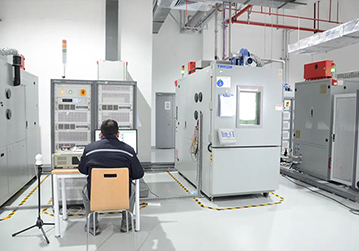At present, the safety standards of lithium ion batteries in the industry mainly include international standards (such as IEC standards), national or regional standards (such as JIS, CB, EN standards, etc.) and industry standards (such as UL, IEEE, SJ, QB standards, etc.).
In these existing standards, the prescribed test methods at high temperature mainly include heat abuse test, temperature cycle test, high temperature placement test, etc.

Heat abuse test
The heat abuse test method specified in IEC 62133 is to place a fully charged battery stabilized at room temperature into a constant temperature and humidity chamber with natural or circulating air convection. The chamber is heated up to 130℃±2℃ at the rate of 5℃/min±2℃/min. Keep this temperature, stop the test after 10min, check whether the battery is on fire or explosion. The heat abuse test of IEC 62133 is adopted by JIS C8712, YD 1268, UL 1642 and other domestic and foreign standards.
Heat abuse test is generally used to assess the safety of the battery cell when placed at high temperature. The battery sample is in a fully charged state during the test, and the sample is not charged or discharged during the test.
Temperature cycle test
The temperature cycle test method specified in IEC 62281 is to place the battery cell or battery pack in an environment of 75℃ for at least 6h, and then in an environment of -40℃ for at least 6h. The conversion time between different temperatures is not more than 30min, and a total of 10 temperature cycles are carried out. After the test, the sample shall not catch fire or explode, and shall not have quality loss and voltage loss. The temperature cycle test of IEC 62281 is quoted from UN 38.3, and the test method is also adopted by EN 62281, CB 21966 and other domestic and foreign standards.
Temperature cycle test is generally used to simulate the safety of battery cell or battery pack under the condition of multiple alternating temperature changes during transportation. During the test, the battery sample was in a fully charged state, and the sample was not charged or discharged during the test.
High temperature stress relief test
The test method for high temperature stress relief (ability of molded case to withstand high temperature) specified in IEC 62133 is to place the battery pack in an environment with a temperature of 70℃±2℃ for 7h. After the test, the battery pack housing should not undergo physical deformation that would expose the internal composition. The stress relief test of IEC 62133 is adopted by EN 62133, JIS C8712 and other standards.
High temperature stress relief test is generally used to test the ability of battery pack housing to maintain integrity in high temperature environment. During the test, the battery pack sample is in full charge state, and no charge or discharge is carried out during the test.
